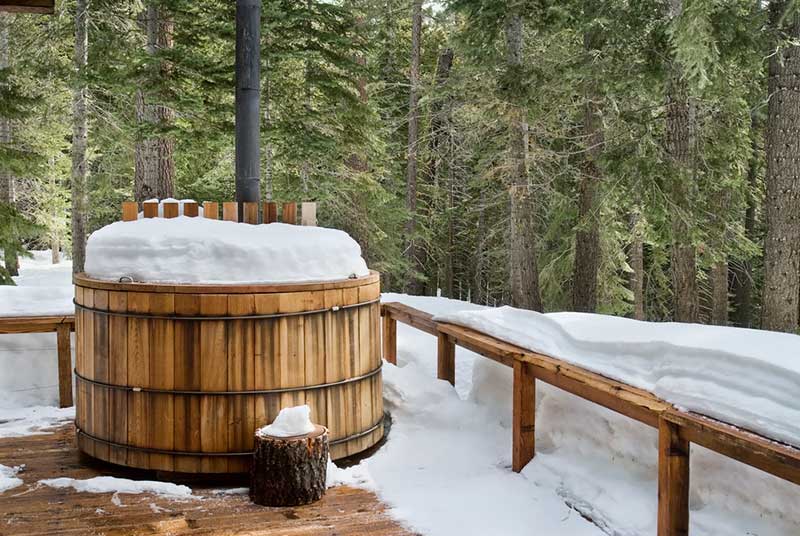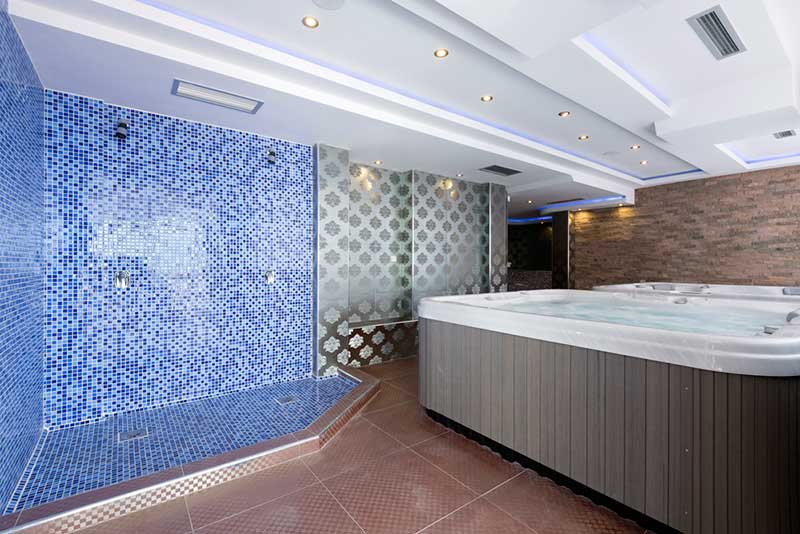
If you have ever jumped into your hot tub only to find that the water is cold and hasn’t heated up you will know how disappointing it is! After all, a hot tub should of course be hot and is fairly useless, not to mention uncomfortable if it is just full of lukewarm water. So, if you have ever had a problem with your hot tub water not heating up then read on to find out the 4 most common reasons why.
So, what are the 4 main reasons a hot tub won’t heat up? A hot tub can fail to heat up due low water flow, a problem with the thermostat, an issue with the heating element or some sort of problem with the high limit switch. Any of these, or indeed, a combination of these factors could be the reason why your hot tub isn’t heating the water.
Although the four reasons outlined above are the primary causes of hot tubs failing to heat water, there are several other causes too which can be considered if none of these options turn out to be the source of the issue. Some of these problems are quick and easy fixes, but others will require assistance from a professional hot tub engineer since they need more extensive repairs that must be carried out by someone with the right training and expertise.
What Causes Low Water Flow in a Hot Tub?
The main reason why hot tubs fail to heat up has to be low water flow. Usually, low flow in a spa is associated with a filter that has become clogged or dirty. Therefore, the first step you should take if your hot tub isn’t heating is to take out the filter and clean it thoroughly or replace it. In many cases, this will resolve the issue quickly and easily.
If this doesn’t solve the problem, the issue could be a water level that is too low, clogs inside the pump impeller, valves that aren’t fully open, or blockages in the drain covers or pipes. Some spa heaters will have screens on their inlet side which are designed to trap the debris which manages to pass through the filter. Should these screens become clogged, there will be less water flow into the hot tub. Cleaning the screens will restore adequate water flow and ensure the hot tub can heat up properly.
Spa heaters need adequate water flow in order to operate. There is a pressure switched fitted into the spa’s heater chamber which will sense whenever the flow of water is too low to protect the heater effectively. A pressure switch breaks the electric circuit that powers the hot tub’s heater element. This causes the heater to shut down if the flow of water isn’t sufficient. Once the water flow has been restored to its correct level, the heater will begin to function once more.

It’s possible to test most types of pressure switch by using jumper wires to connect both wires together and bypass the switch. Some hot tub pressure switches are adjustable with a screw or thumbwheel. This allows the circuit to be closed at a specific pressure rating. Some can be adjusted between 1 and 5 PSI. Small adjustments can be made to the tub’s pressure switch by simply turning the screw or wheel. However, it’s always safest to use the setting which was calibrated in the factory.
There are some hot tub heaters that use flow switches either instead of or as well as pressure switches. A flow switch will not sense water pressure, but will sense water flow instead. If the flow of water is adequate, the two paddles will be pushed together, closing the circuit. Should the flow not be strong enough, the flow switch will stay open, causing the heater to fail to operate.
You may be able to test your flow switch by using jumper wires to connect both wires together to bypass the switch. If you flow switch is a mechanical Harwil type, it may be unscrewed from its housing then inspected for corrosion or scale. You can’t adjust a flow switch, however they do sometimes require adjustment. Make sure that its surfaces have been cleaned of any scale and that the paddles haven’t been bent. If your paddles are Harwil type they must be kept perpendicular to the flow of water to ensure they operate fully.
Is My Hot Tub Thermostat Faulty?
The hot tub’s thermostat is a dial which is turned to increase the heat. A lot of newer spa models have a temperature sensor which is connected to the circuit board, meaning the control panel on the top is only a remote control. Older spas tended to use potentiometers as well as solid state probes and the oldest hot tubs used mechanical thermostats that had a capillary bulb.
Should your thermostat have a knob rather than a red lighted arrow, it’s possible to test it to see if there’s a fault inside the unit or whether there is corrosion of the sensor bulb.
If your hot tub is a newer model and features a control panel on its top side, the thermostat will usually have been replaced with a temperature sensor which plugs into the spa controller’s main circuit board with a probe end that will slip into a thermowell. You should check the probe and cord for any damage and to check that it has been snugly plugged into the control panel.
If the control panel isn’t displaying the right water temperature, the temperature sensor is probably faulty. However, if it doesn’t respond to any input or it has any visible water damage, it could be the control panel at fault.
Could The Hot Tub High Limit Switch Be The Problem?
Hot tubs have a high limit switch which is similar to the thermostat and pressure switch since it also forms one component in a spa safety circuit. The purpose of the high limit switch is to stop the spa heater from overheating and failing to switch off which could cause the water to become scalding hot, or even cause a meltdown. All high limit switches have been calibrated to a maximum pre-set temperature. When this temperature is reached, the switch opens and this breaks the electric circuit carrying power to the heater element of the spa.
Some spa tubs have two high limit switches. One monitors the temperature inside the tub’s heater, while the other monitors the temperature outside the heater. If there is a high limit error, the control panel will usually display either an OH or HL error code.
On an older spa, there will be a red button which pops out whenever the high limit temperature is reached. If your spa constantly experiences high limit trips, this could be because of low water flow which results in the heater temperature becoming higher than usual. It could also be due to an incorrect voltage, loose connections or damage in the wires, malfunctioning elements or a fault with the high limit switch.

Could My Hot Tub Heater Element Be Faulty?
Another cause of hot tubs failing to heat up is a problem with the heater element. A hot tub heater element is similar to a hot water electric heater element and, therefore, it can burn out rapidly whenever it is operated without sufficient cool water around it. It’s possible to test a hot tub element to determine whether a short has occurred in the coating that surrounds the heater element.
You can do this by using a test meter that is set on ohms to measure resistance in the hot tub heater element. If the element is working properly, the display should read 9 – 12 ohms. Should the meter read “infinity” or should the reading continue to slowly rise, this means the element has a short and therefore it requires replacement.
A spa heater element may also develop build up of scale, either from hard water or from sanitising with salt systems. If scale has developed on the outer side of the spa heating element, the heat output will be significantly reduced and this could eventually cause failure of the element. A spa heater element looks similar to a stove top heater coil. Therefore, should its outer casing get cracked, you’ll need to replace the element.
If you live in a hard water area, you can use a sequestering agent. This keeps the calcium scale in solution, while if you can keep the water’s alkalinity low at around 70 – 80 ppm, the formation of scale will be reduced on the heater element.
If your spa is a newer model, you may find the heater element has been housed inside a stainless steel, sleek chamber that features unions to allow for easier removal. These are complete spa heaters, and you can easily test the pressure switch, high limit switch and element for resistance with the measurement in ohms.
If you test with an ammeter or multimeter, you’ll find an open occurs if the meter spikes up to a higher reading. Meanwhile, a short occurs if you see virtually no activity or even none at all on the meter. If there’s no resistance, short circuiting is occurring which means the current leaves the circuit.

Are There Any Other Causes Of A Hot Tub Failing To Heat Up?
Although the four reasons outlined above are the primary causes of a hot tub failing to heat up, there are a few other reasons why your spa may be experiencing this surprisingly common problem. These issues may not be the most obvious causes of a problem with your spa failing to heat, but the best news is that they’re quick fixes.
Actually, it makes sense to check out these possible causes before you explore the above four options since they are speedy solutions and can be ruled out rapidly.
- Your GFCI may have tripped. You should check the spa pack’s electrical outlet to see whether the red test button has popped out. If it has, push it firmly back into place. This should solve your heating problem.
- Your door interlock is open. A lot of spas feature a spa pack cover switch or cabinet switch that prevents the motor from operating unless the doors have been closed correctly. Make sure that the doors are firmly shut to get your motor working once more.
- The spa cover requires replacement. If your spa cover is ill-fitting, broken or warped, heat can rapidly escape. This can mean that it seems as if your hot tub isn’t heating up whereas in fact, the motor is heating the water correctly but it is escaping as rapidly as the heater can add it to the spa water.
- There is a loose wire. The wire connections in your spa must not be oxidised and must be properly tightened. If wires have been chewed by pests, melted by excess heat or crimped due to undue pressure, it’s possible that this is causing your tub to fail to heat.
- A fuse has blown. Power surges and spikes, or any other cause of incorrect voltage could have damaged the fuse on your spa’s control board. Try replacing the fuse with another of the appropriate rating and test whether your heater begins to function properly again.
As you can see, all of these potential causes of your hot tub failing to heat up are quite simple to spot and even easier to fix. If you make these your first port of call before resorting to checking the above four main causes you may find that you save yourself a lot of time and effort.
Related Questions
Could cold weather be causing my hot tub to fail to heat up? Although there are a number of causes for your hot tub failing to heat up, one cause that is often overlooked is cold weather. If you turn your spa tub off during the winter months but then fail to winterise it properly, the hot tub may end up freezing up. This causes damage to its components and, when you come to use it once more, it will no longer be able to heat the water properly.
It isn’t difficult to winterise your hot tub. Just make sure that the water has been fully drained out before the weather becomes too cold, clearing out any excess water that may be inside the air blower by shutting the heater off and running the blower for 30 seconds before using your wet-dry vacuum cleaner to suck any extra water up from the hot tub’s floor and from each jet.
Once you’ve done this, remove your tub’s filters then rinse them thoroughly before drying them off properly. If you need to replace the filters, throw your old ones away, order brand new ones and remember to fit them before you start your hot tub up once spring comes around.
Can I make my hot tub hotter? If you’d like your hot tub to make the water warmer, there are some precautions that you’ll need to follow. Make sure that you read your user manual and check your specific model’s specifications to avoid making a serious error. All hot tub manufacturers have a limit to the temperature that you can set your hot tub to because of potential health problems and because of normal human body temperatures.
Modern spa tubs have been set to permit maximum temperatures of 104 degrees Fahrenheit. In no circumstances should you try to increase the temperature of your hot tub above this limit. However, if you’ve set your hot tub thermostat to 104 degrees Fahrenheit and it still doesn’t feel warm enough you may need to check that the heater is functioning correctly by using a floating thermometer. If it isn’t working properly, you should use the steps outlined above to check what is causing your hot tub to fail to heat properly.
If your heater is working properly but you’d still like to maximise the heat of your water you can turn the jets on while you crank the temperature up. This helps to heat the entire tub thoroughly rather than having colder spots. You can also install insulation to keep the water in the tub warmer. You can insulate both the interior and exterior of the hot tub and even use some spray foam to layer the rear of the hot tub, surrounding both the jets and the pipes to keep the water as warm as possibly.
If yours was a cheaper hot tub, there’s a chance that it is poorly insulated and this allows more heat to be lost. You can rectify this yourself by adding more insulation of your own, just make sure that you don’t block the air flow or cover anything that spins, moves or that is electric. Most importantly, ensure that nothing tampers with your hot tub’s sensors since this can void your spa’s warranty. You should also invest in a very tight-fitting spa cover as this will help to keep your water as hot as possible between uses.

